Aratinga

Jenday Conure, by Dick Daniels, CC BY-SA 3.0
Genus Name: Aratinga
Status: Extant
First Described: 1824
Described By: Spix
Classification: Dinosauria, Theropoda, Neotheropoda, Averostra, Tetanurae, Orionides, Avetheropoda, Coelurosauria, Tyrannoraptora, Maniraptoriformes, Maniraptora, Pennaraptora, Paraves, Eumaniraptora, Averaptora, Avialae, Euavialae, Avebrevicauda, Pygostylia, Ornithothoraces, Euornithes, Ornithuromorpha, Ornithurae, Neornithes, Neognathae, Neoaves, Inopinaves, Telluraves, Australaves, Eufalconimorphae, Psittacopasserae, Psittaciformes, Psittacoidea, Psittacidae, Arinae, Arini
Referred Species: A. solstitialis (Sun Conure), A. maculata (Sulphur-Breasted Parakeet), A. jandaya (Jenday Conure), A. auricapilla (Golden-Capped Parakeet), A. nenday (Nanday Parakeet), A. weddellii (Dusky-Headed Conure), A. vorohuensis
It is difficult to really pick a favorite genus of modern day bird to do on my birthday - so many parrots, passerines, and penguins to choose from! But I think I have to go with Aratinga, a genus of Conures that includes the charismatic Sun and Jenday Conures. This genus has a fossil record, with A. vorohuensis being found in Argentina. It was discovered in the Vorohué Formation, a location on the coast of Northwestern Argentina, and it lived about 3 million years ago, in the PIacenzian age of the late Pliocene of the Neogene. Whether or not this is when Aratinga evolved as a genus is uncertain, as the bird is not particularly interesting or unique; in fact, it resembles A. nenday extensively, so it’s difficult to pin point when this genus first evolved - but, at the least, it was no later than the Pliocene, and it probably originated in South America.
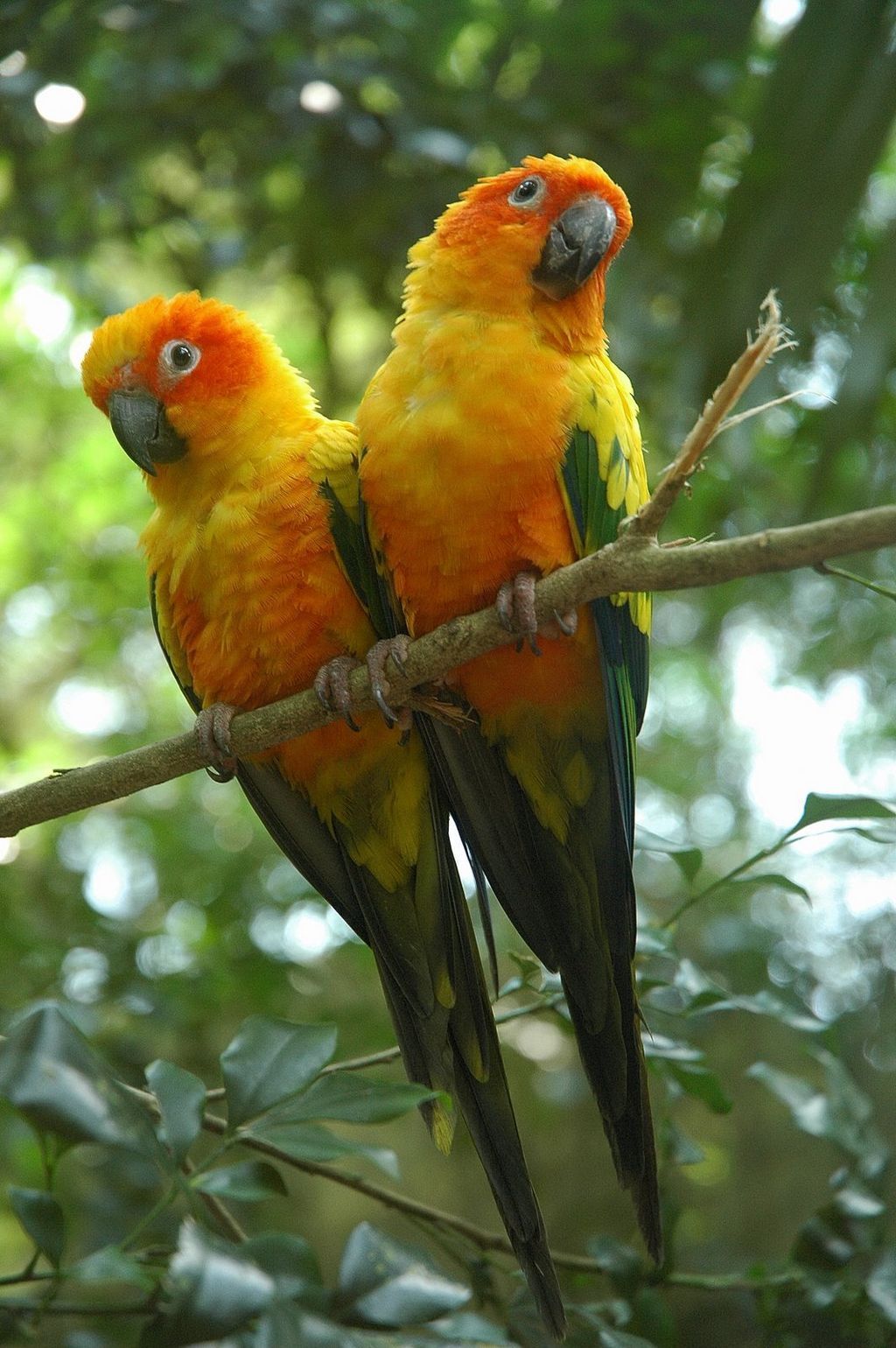
Sun Conure, by Wayne Deeker, CC BY 3.0
The Sun Conure, A. solstitialis, is arguably the most famous species of the genus, being often kept as a pet bird. However, it is endangered, due to loss of habitat and excessive catching for the aforementioned pet trade (making it very important that, if you want a pet Sun Conure, you get it from a shelter!) Bans imposed that stop the importation of parrots into the USA has lead to more breeding in captivity, however illegal trade still occurs, and capture of wild birds is still a serious threat, leading to its endangered status. Captive breeding does, however, ensure the continuation of the species. They are yellow birds, with red around the face and belly, and green and blue feathers on the wings. Juveniles are mostly green, with the other coloration attained as it grows. They’re usually around 30 cm long.
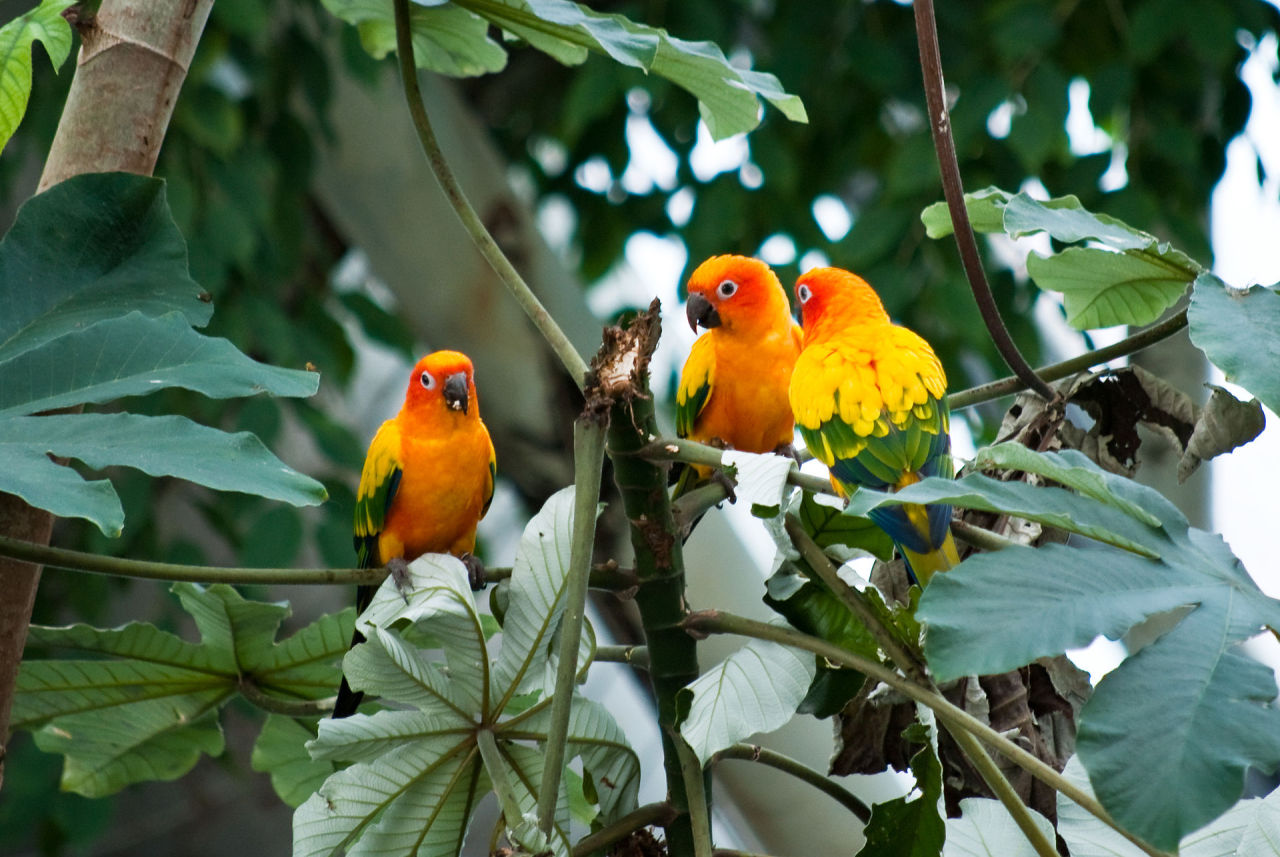
By Chris Williamson, CC BY 2.0
Curious and brightly colored birds, they live in a small region of North-Eastern South America - Braizil, French Guiana, Guyana, and Suriname. There have also been sightings of it in Venezuela. They live in tropical habitats, mostly humid tropical forests though they will cross savannah and coastal forests in order to get from habitat to habitat, and they inhabit fruiting trees and palm groves. They are social birds, living in large flocks of 20 to 30 individuals, and will squawk and scream loudly when separated in order to return to the flock. They’re quiet when feeding, but vocal in flight, and travel many miles in a day. They also have a variety of physical displays with one another, and they feed, rest, preen, and bathe during daylight. They can use their beaks to move through the trees as well, and they use their feet to examine the world, like we do with our hands.
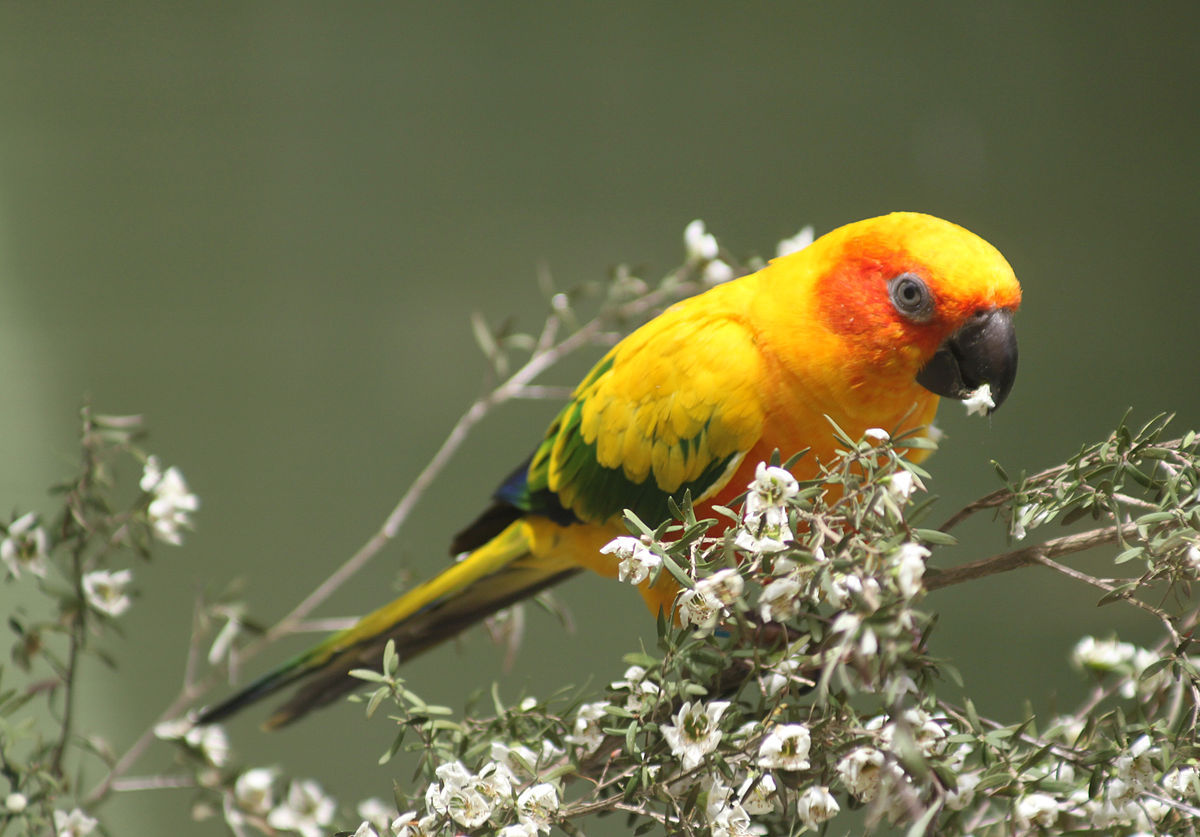
By Brian Gatwicker, CC BY 2.0
Sun Conures nest in palm cavaties, and when they’re molting, they’re uncomfortable and irritable. They thus bathe and seek out rain and humidity in order to allow the feathers to come in more easily. They feed on fruits, flowers, berries, blossoms, seeds, nuts, and insects in the wild, as well as cactus fruit and even agricultural pests. They form monogamous breeding pairs at about 4 to 5 months of age, and they feed and groom each other before breeding. They mate for up to three minutes and are then affectionate with each other. They nest in trees and palms, and lay 3 to 4 eggs per clutch. The females incubate the eggs from 23 to 27 days, and males protect the nest. The chicks are dependent on their parents until 8 weeks after hatching, and they become independent after 9 to 10 weeks. Though they can form pairs early on, but are only really sexually mature at about 2 years of age, and live up to 30 years.
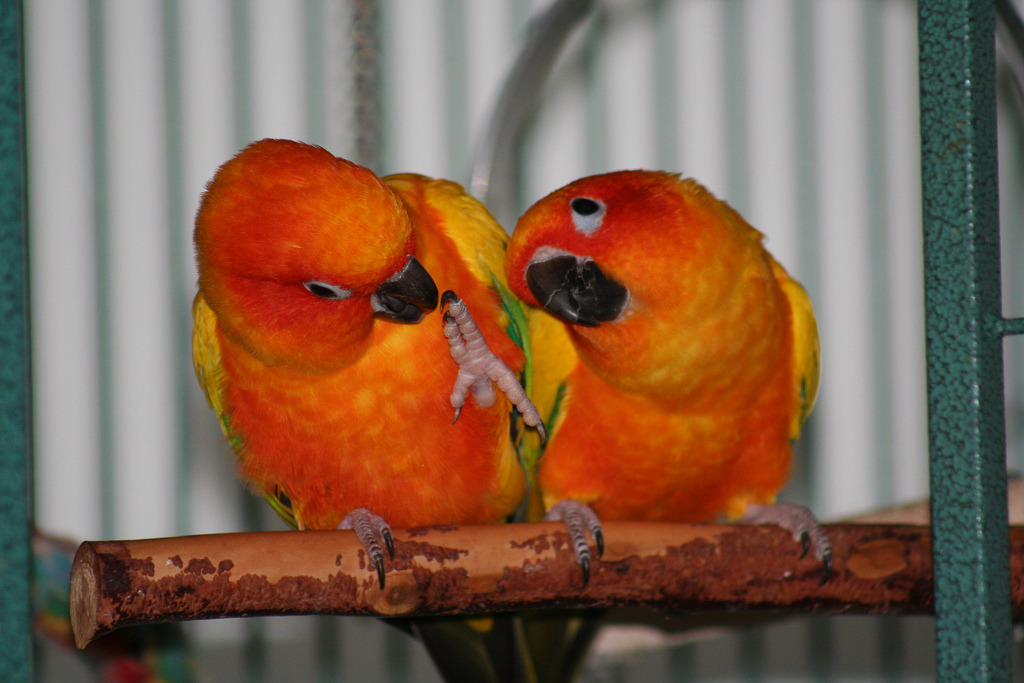
By Lionpro2006, CC BY 2.0
Their behavior is very poorly known in the wild, and most of our knowledge about them comes from their behavior in captivity. In captivity, they can learn to speak and perform tricks to a moderate degree. They feed on many different types of plants, and use cuttle bones or other calcium-rich substances to obtain calcium in their diet. They are very loud for their size and are very curious, so they require a lot of attention - but they can also be very loving and cuddly, and can be friendly towards those they know well. They like to listen to music, and can dance and sing along with. They chew on a lot of things and need toys to chew as pets, and they require extreme attentiveness in order to make sure they don’t escape, bite something they shouldn’t, or otherwise harm themselves.
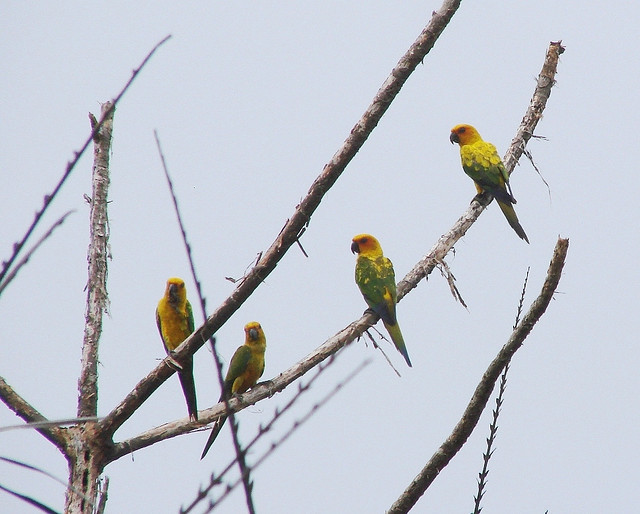
Sulphur-breasted Parakeet, by Sidnei Dantas, CC BY 2.0
The Sulphur-Breasted Parakeet, A. maculata, resembles the Sun Conure extensively. It used to be two different species, A. maculata and A. pintoi, but those were since combined. It has been reported around the Amazon river, but it’s status as its own species separate from the Sun Conure is relatively new, and so much of its behavior and range is unknown. It is thought, however, to be of Least Concern in terms of its conservation status. They have more green feathers on the ring and greyish eye-rings in the wild, though it can fade to white in captivity.
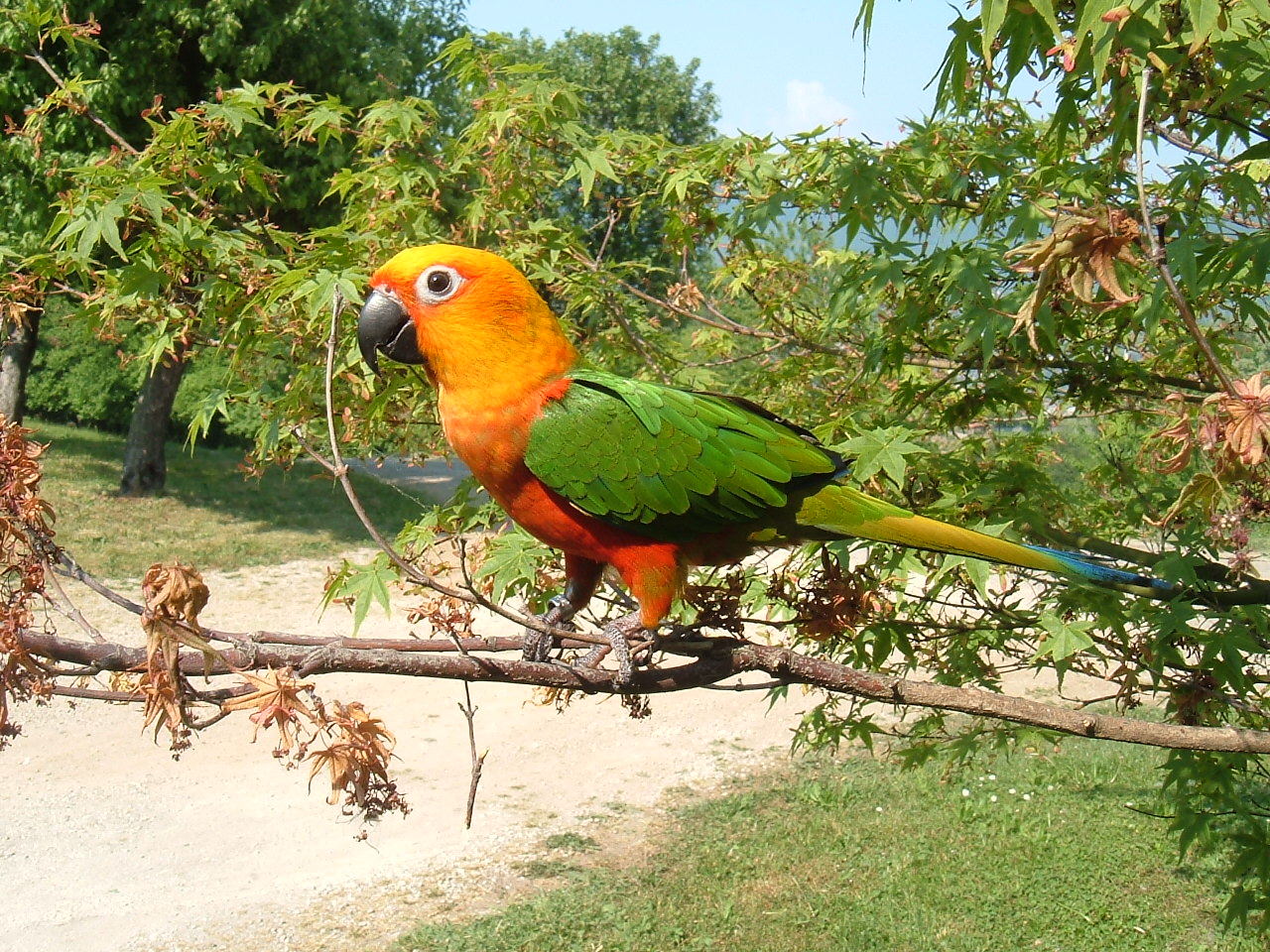
Jenday Conure, by Giannizzzero, in the Public Domain
The Jenday Conure, A. jendaya, is my favorite species in the genus, and thus my favorite species of modern-day dinosaur. It is small and long tailed, with a reddish orange body, orange cheeks, a black bill, and green and blue wings and back. It’s tail feather ends are tinged blue, and it’s about 30 cm long. it has a loud and shrill call, and is found primarily in Brazil, in lowland woodlands and palm groves. They feed on mangos, cashews, apples, and nuts, as well as human crops, which often leads to them being considered pests. They nest in tree hollows, about 15 meters from the ground, and the young are fed by both parents.

By Frank, CC BY 2.0
Jenday Conures are not endangered, and the trade and export of them is forbidden. Though they are not endangered and have a wide range, they are fairly scant in their ranges, and are rare to spot. They are often called the flaming conure, due to their bright red feathers, and are often kept as pets. They are intelligent birds and mimic sounds well, and are very social, living in large flocks in nature. They are very affectionate and playful birds, and are also extremely curious, so much like the Sun Conure, when kept as a pet they require extensive supervision.
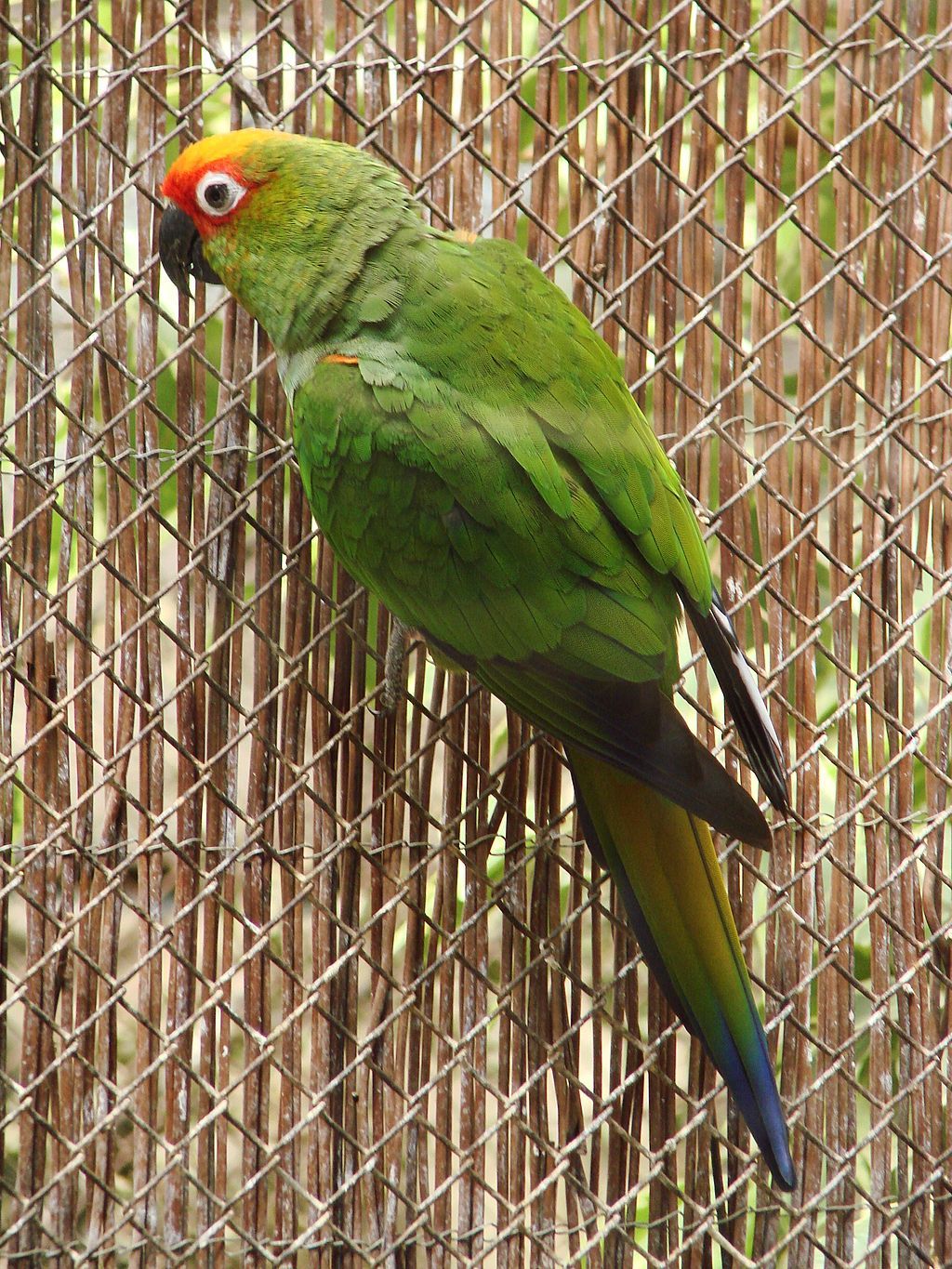
Golden-Capped Parakeet, by Guérin Nicolas, CC BY-SA 3.0
The Golden-Capped Parakeet, A. auricapillus, is another species of this genus, found in Brazil and Paraguay. It typically lives in tropical and subtropical dry forests and lowland forests, savanna, and plantations. It is near threatened due to habitat loss. It is about 30 cm long and is mostly green, with an orange bell and red face, leading to its name.
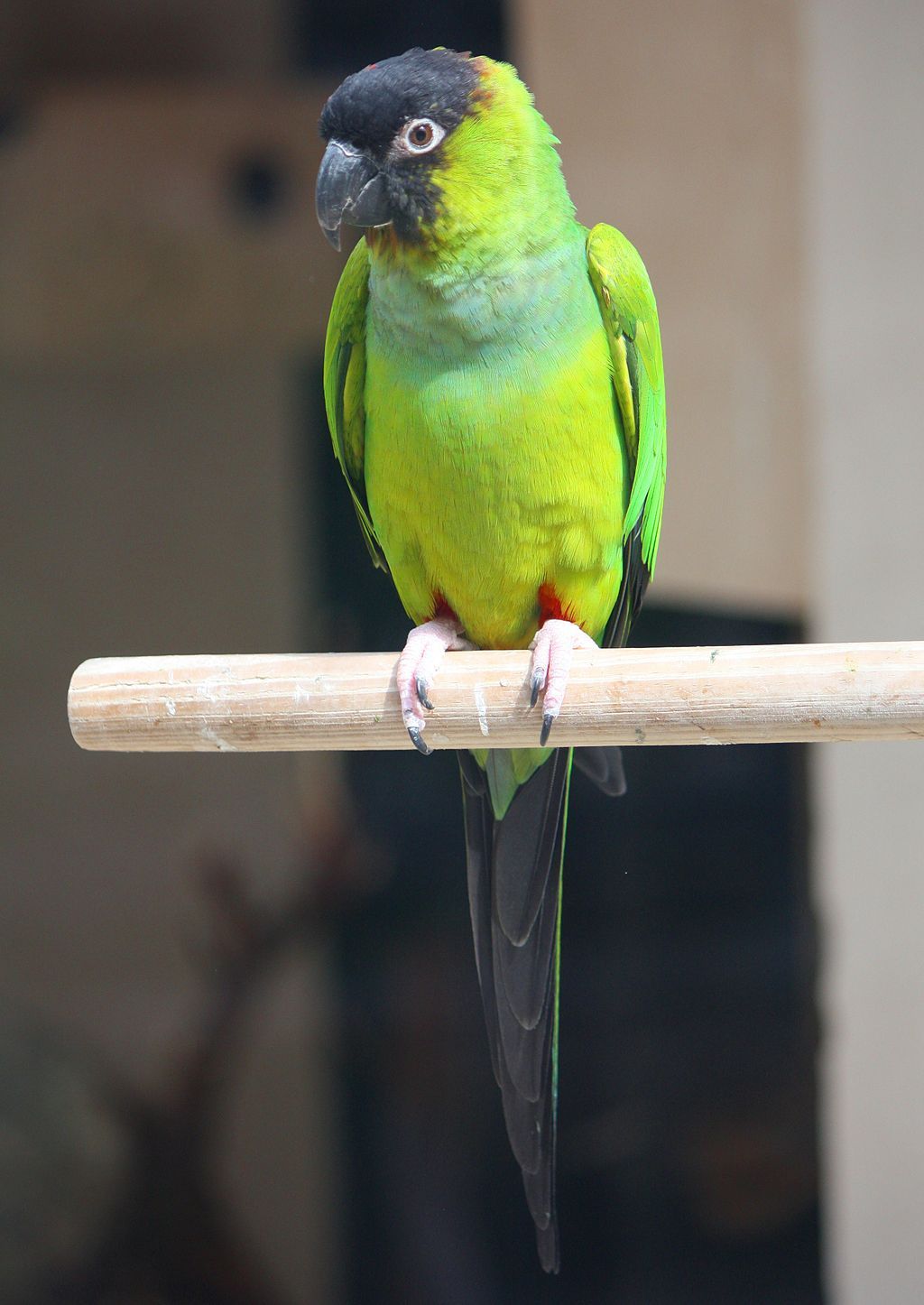
Nanday Parakeet, by J. Patrick Fischer, CC BY 3.0
The Nanday Parakeet, A. nenday, is another species of the genus - maybe - it’s been placed in its own before and Aratinga in general is probably paraphyletic (meaning, it’s not a single clade, but rather bits and pieces of other bird clades). It is 32 to 37 cm long, making it longer than other species in this genus, and doesn’t seem to particularly resemble them to look at. It is mostly green and has a black facial mask and beak, and has black flight feathers. It’s tail is tipped in blue, and its upper chest is bluish-green. They feed on seeds, fruit, nuts, berries, flowers, and buds. They live in scrub forest and forest clearings, as well as savannas and pastures. They find holes in trees to nest in, laying three or four eggs, and they form large communal roosts. IN captivity, they much like their relatives require sufficient stimulation and observance - they are very good at escaping from their cages!
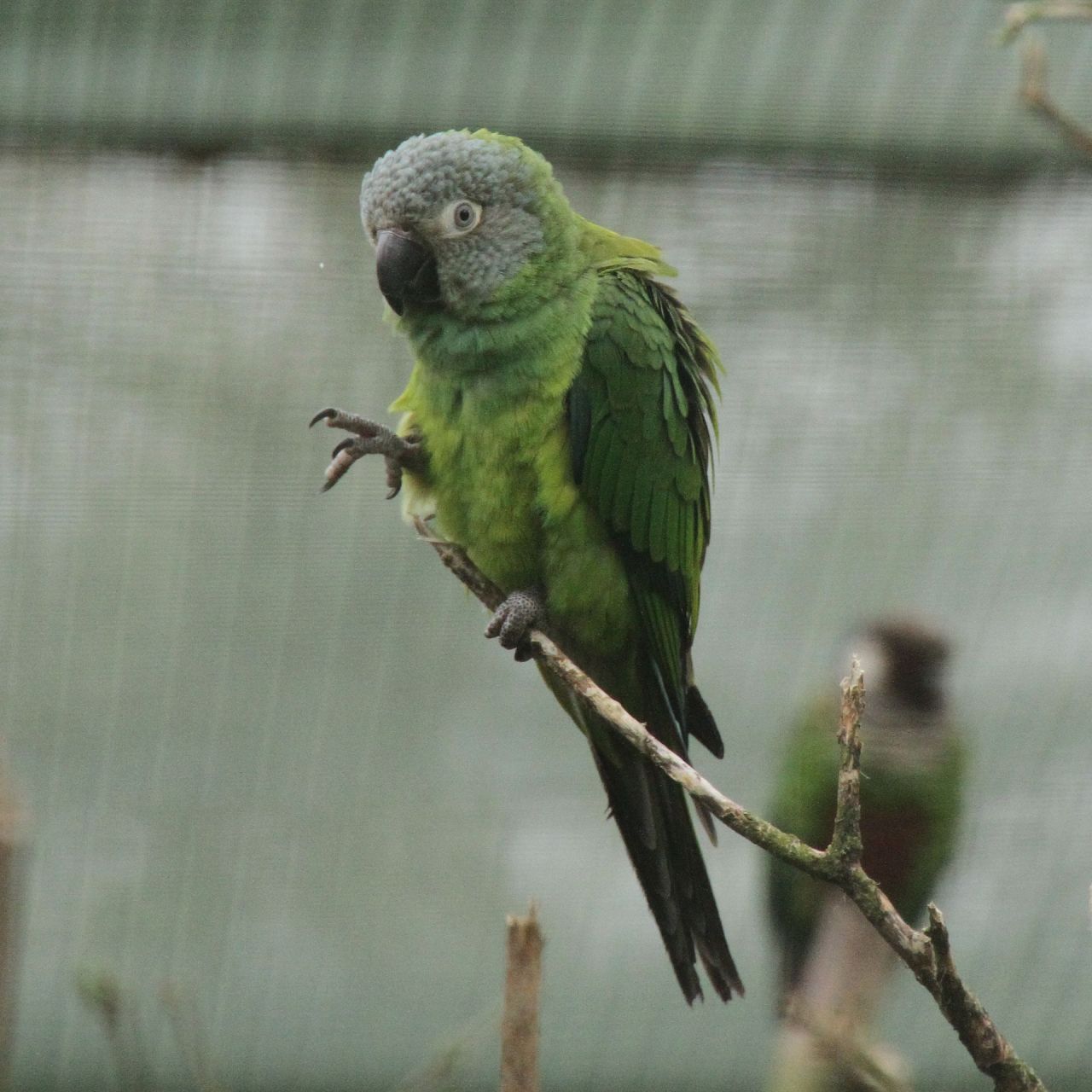
Dusky-Headed Parakeet, by David Long, CC BY 2.0
Finally, our last species, A. weddellii, is the Dusky-Headed Parakeet, or Dusky Conure. It is a green parrot from Brazil, Peru, and Venezuela, and is fairly common and not threatened in its conservation status. It is a small parrot, only about 25 to 28 cm long, and it is green in color with a grey head, a blue-tipped tale, and varying shades of green and grey on its body. They’re sometimes called mini macaws, because they have skin near their beak and eye like macaws. They are found in pairs and small groups, even flocking with other conures, with flocks having up to 100 members in times of plenty. They eat fruit, seeds, and flowers, and even insect larvae and mineral-rich soil and clay. They also are kept in captivity. They have life spans of anywhere from 25 to 50 years. As with all members of this species, they are energetic and playful birds.
Sources:
https://en.wikipedia.org/wiki/Aratinga
https://en.wikipedia.org/wiki/Aratinga_vorohuensis
Tonni, E. P., J. I. Noriega. 1996. Una nueva especie de Nandayus Bonaparte, 1854 (Aves: Psittaciformes) del Plioceno tardío de Argentina. Revista Chilena de Historia Natural 69: 97 - 104.
https://en.wikipedia.org/wiki/Sun_parakeet
https://en.wikipedia.org/wiki/Sulphur-breasted_parakeet
https://en.wikipedia.org/wiki/Jandaya_parakeet
http://www.parrotsecrets.com/Jenday-Conure/about-jenday-conure.php
https://en.wikipedia.org/wiki/Golden-capped_parakeet
https://en.wikipedia.org/wiki/Dusky-headed_parakeet
Shout out goes to @best-deodorant-for-men-blog!












